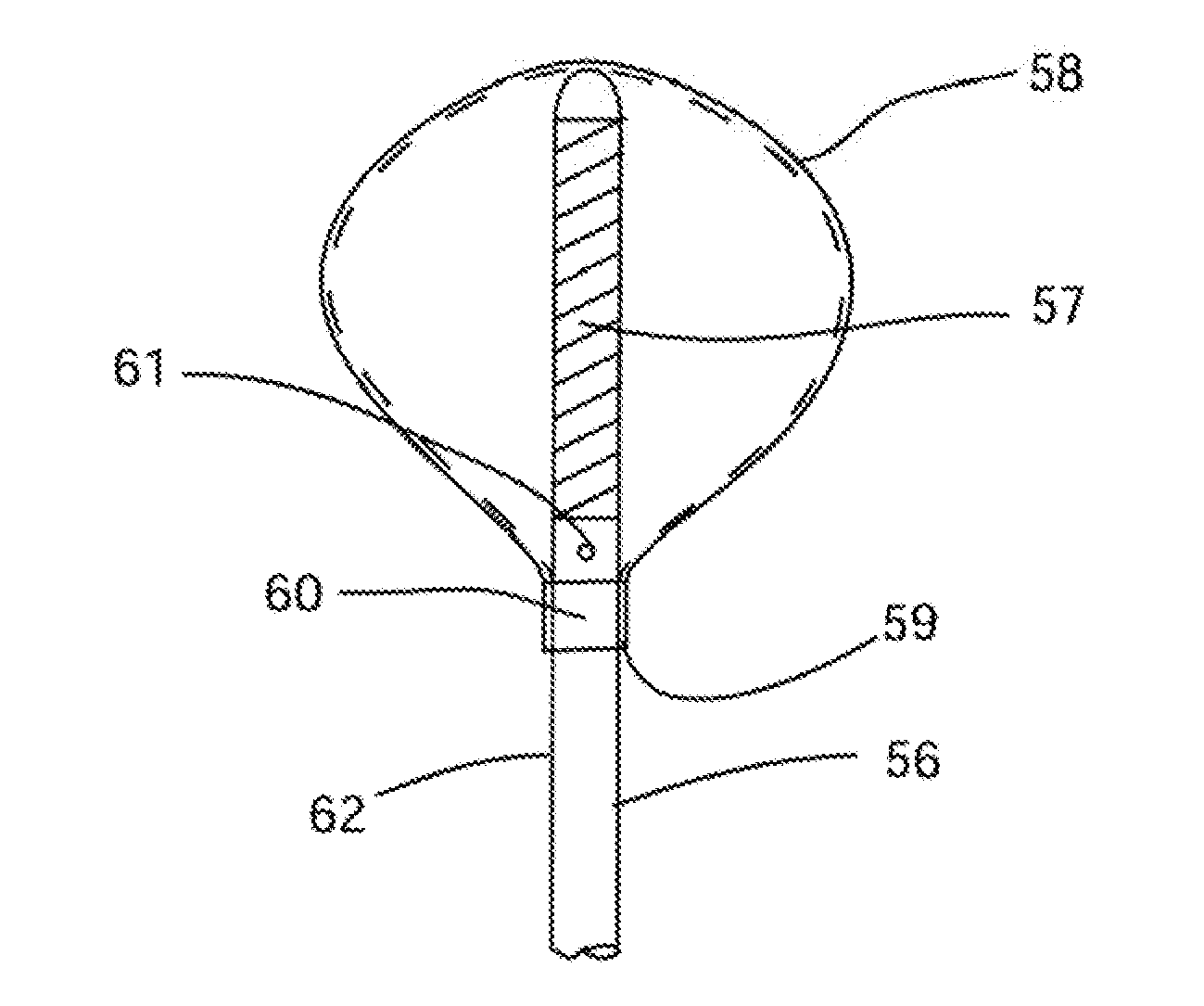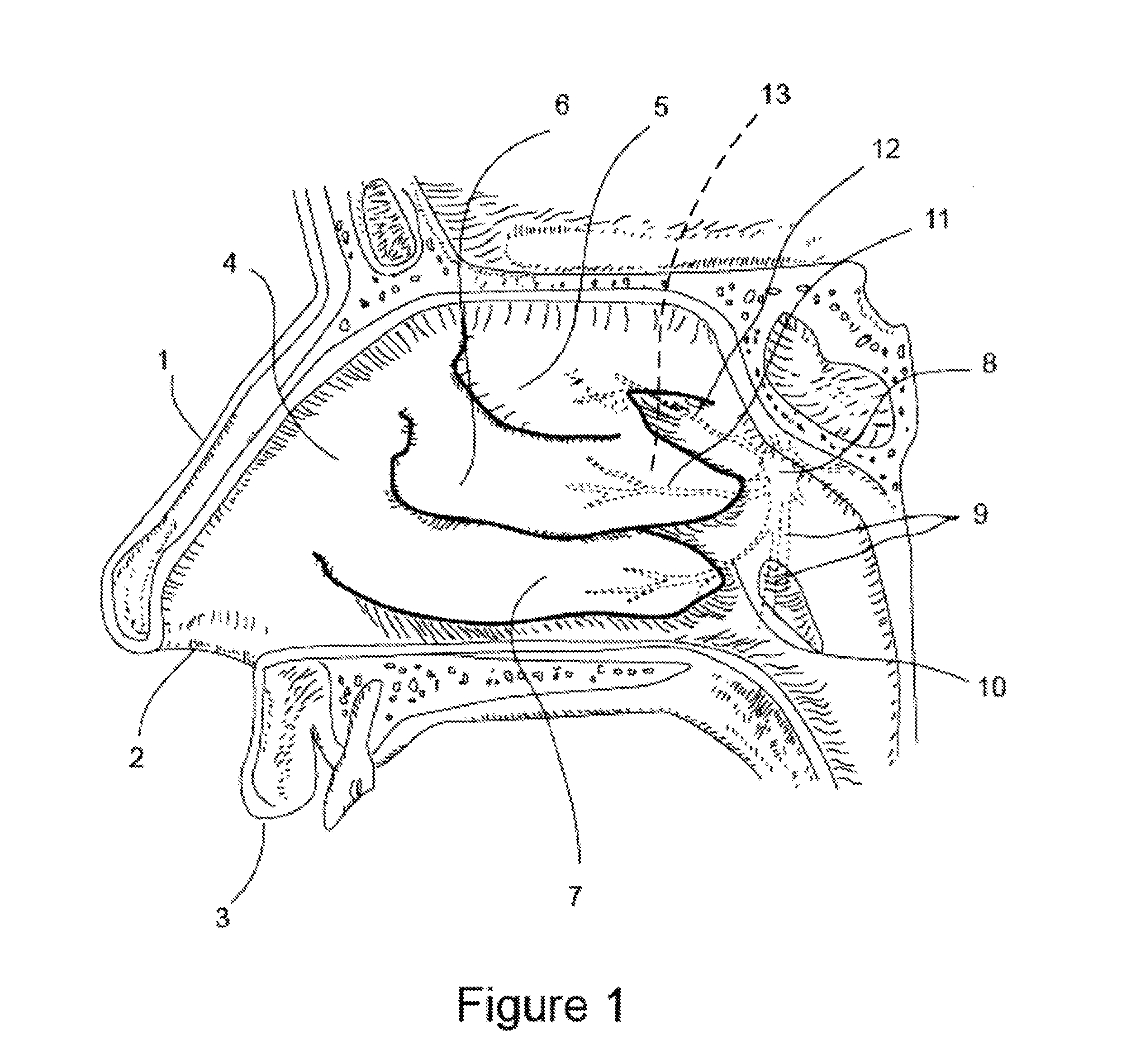Apparatus and Methods for Treating Rhinitis
a technology for rhinitis and apparatus, applied in the field of apparatus and methods for ablating tissue regions, can solve the problems of limited effect of medical treatment, acute pain and swelling, overtreatment, bone damage, etc., and achieve the effect of optimal tissue freezing and ablation of posterior nasal nerves
- Summary
- Abstract
- Description
- Claims
- Application Information
AI Technical Summary
Benefits of technology
Problems solved by technology
Method used
Image
Examples
embodiment 270
[0181]The angle of deflection may be between approximately 60 to 120 degrees and may be configured for deflection in one direction, or in two directions as shown. The deflection means comprises at least one pull wire housed within probe shaft 267 and a deflection actuator disposed in the vicinity of the proximal end of probe 266. Those skilled in the art deflectable tipped surgical probes are familiar means for creating a deflectable tipped cryosurgical probe according to this invention. FIGS. 16C and 16D are schematic illustrations of the distal end of an alternative embodiment 270 of the cryosurgical probe where the cryo-ablation element 274 is configured for producing multiple discrete cryo-ablations simultaneously. Cryo ablation element 274 comprises an expansion chamber, not shown, discrete lateral cryo-ablation surfaces 272, surrounded by thermal insulation 273. Ablation element 274 comprises a hollow bullet shaped metallic structure with lateral protrusions in the surface for...
embodiment 287
[0182]FIG. 17A is a schematic illustration of the distal end of an alternative embodiment 280 of the cryosurgical probe comprising a semi-circular cryo-ablation element 282. Cryo-ablation element 282 comprises a continuation of probe shaft 281 formed in a semi-circle as shown. Within the semi-circular section cryogen delivery tube 283 comprises an array of lateral fenestration in the one axial direction relative to semi-circular form, making the corresponding surface of the ablation element 282 the cryo-ablation surface. FIG. 17B is a schematic illustration of the ablation 284 morphology in the nasal mucosa 288 resulting from use of the semi-circular ablation element 282. The gap 286 in the ablation provides blood perfusion to the mucosa encompassed by the ablation providing a reduction in tissue sloughing as the result of the ablation, as well as a reduction in the chance of infection, and a reduction of patient discomfort. FIG. 17C is a schematic illustration of the distal end of ...
embodiment 362
[0188]FIG. 22A is a schematic illustration of an alternative embodiment 377 of RF ablation probe 362 comprising a linear electrode array 378 disposed on a planar surface; a fluid irrigation ports 387 associated electrodes 379, and a deployable needle 380 configured for injecting a liquid into a sub-mucosal space. FIG. 22B is a schematic illustration of the distal end of the alternative embodiment 377 RF ablation probe showing the arrangement of the ablation electrodes 379 and the associated fluid irrigation ports 387. FIG. 22C is a schematic illustration of the distal end of the alternative embodiment377 RF ablation probe showing the arrangement of the ablation electrodes 379 and the associated fluid irrigation ports 387 with the needle 380 deployed. The function, of domed electrodes 379, fluid ports 387, electrical connector 343, fluid connector 344, RF activation switch 345, handle 382, and shaft 384 all function in essentially the same manner as described for prior embodiment 362...
PUM
 Login to View More
Login to View More Abstract
Description
Claims
Application Information
 Login to View More
Login to View More - R&D
- Intellectual Property
- Life Sciences
- Materials
- Tech Scout
- Unparalleled Data Quality
- Higher Quality Content
- 60% Fewer Hallucinations
Browse by: Latest US Patents, China's latest patents, Technical Efficacy Thesaurus, Application Domain, Technology Topic, Popular Technical Reports.
© 2025 PatSnap. All rights reserved.Legal|Privacy policy|Modern Slavery Act Transparency Statement|Sitemap|About US| Contact US: help@patsnap.com



